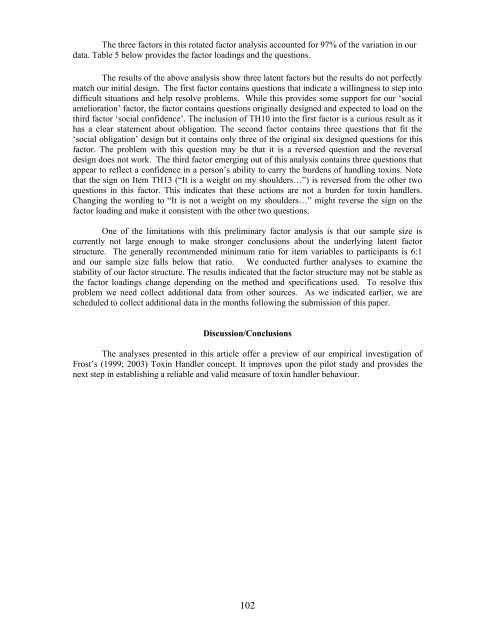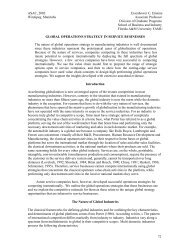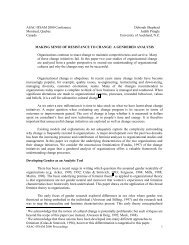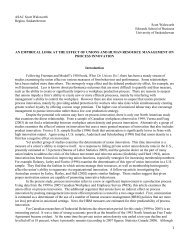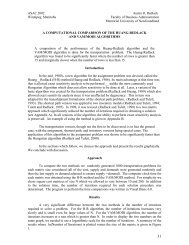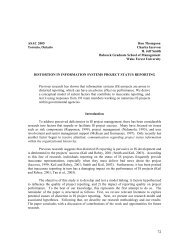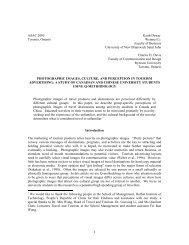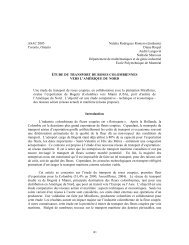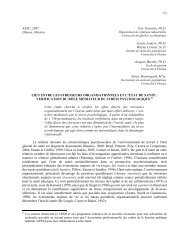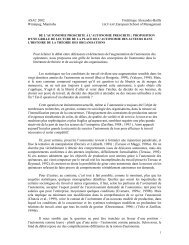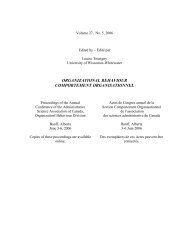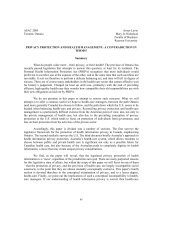Organizational Behaviour Comportement Organisationnel
Organizational Behaviour Comportement Organisationnel
Organizational Behaviour Comportement Organisationnel
You also want an ePaper? Increase the reach of your titles
YUMPU automatically turns print PDFs into web optimized ePapers that Google loves.
The three factors in this rotated factor analysis accounted for 97% of the variation in ourdata. Table 5 below provides the factor loadings and the questions.The results of the above analysis show three latent factors but the results do not perfectlymatch our initial design. The first factor contains questions that indicate a willingness to step intodifficult situations and help resolve problems. While this provides some support for our ‘socialamelioration’ factor, the factor contains questions originally designed and expected to load on thethird factor ‘social confidence’. The inclusion of TH10 into the first factor is a curious result as ithas a clear statement about obligation. The second factor contains three questions that fit the‘social obligation’ design but it contains only three of the original six designed questions for thisfactor. The problem with this question may be that it is a reversed question and the reversaldesign does not work. The third factor emerging out of this analysis contains three questions thatappear to reflect a confidence in a person’s ability to carry the burdens of handling toxins. Notethat the sign on Item TH13 (“It is a weight on my shoulders…”) is reversed from the other twoquestions in this factor. This indicates that these actions are not a burden for toxin handlers.Changing the wording to “It is not a weight on my shoulders…” might reverse the sign on thefactor loading and make it consistent with the other two questions.One of the limitations with this preliminary factor analysis is that our sample size iscurrently not large enough to make stronger conclusions about the underlying latent factorstructure. The generally recommended minimum ratio for item variables to participants is 6:1and our sample size falls below that ratio. We conducted further analyses to examine thestability of our factor structure. The results indicated that the factor structure may not be stable asthe factor loadings change depending on the method and specifications used. To resolve thisproblem we need collect additional data from other sources. As we indicated earlier, we arescheduled to collect additional data in the months following the submission of this paper.Discussion/ConclusionsThe analyses presented in this article offer a preview of our empirical investigation ofFrost’s (1999; 2003) Toxin Handler concept. It improves upon the pilot study and provides thenext step in establishing a reliable and valid measure of toxin handler behaviour.102


